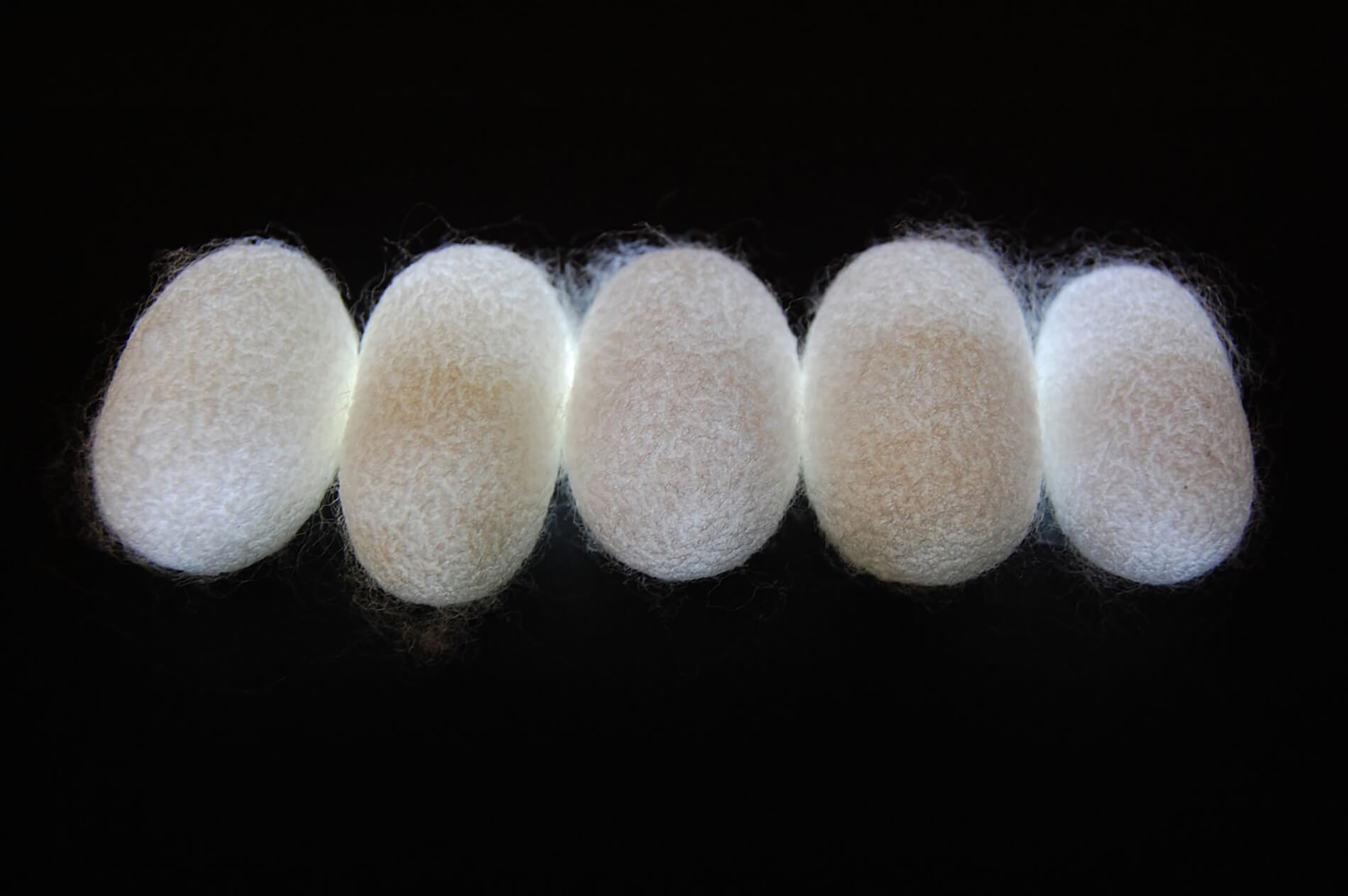
New research suggests fibers from a silkworm’s cocoon may represent “natural metamaterials,” a discovery with various technological and scientific implications. (Purdue University image/Young Kim)
Silkworm fiber could hold the key to a number of innovations involving natural metamaterials.
Researchers from Purdue University have revealed how the nano-architecture of a silkworm’s fiber causes “Anderson localization of light,” a discovery that could pave the way for a better understanding of light transport and heat transfer.
“Our findings could open up new possibilities for metamaterials and metastructures,” Young Kim, an associate professor in Purdue University’s Weldon School of Biomedical Engineering, said in a statement. “I know this is an oxymoron, but we are saying silk fibers represent ‘natural metamaterials’ and ‘natural metastructures’.”
The Anderson localization of light—named after Nobel laureate Phillip Anderson—is a theory that describes how electrons can be brought to a complete halt in materials due to their scattering and defects.
The discovery, which relate to light transport and not electrons, could help create synthetic materials and structures that realize the phenomenon.
The researchers demonstrated how the nano-architecture of the silk fibers is capable of light confinement—a trait that could provide a range of technological applications including innovations that harness light for new types of medical therapies and biosensing.
The findings also suggest that silk fibers may represent natural metamaterials and natural metastructures.
In the past, researchers have created synthetic metamaterials capable of the ultra-efficient control of light. However, metamaterials have limitations and are often difficult to scale up for commercial production and pose other challenges.
Silk’s nano-architecture is disordered rather than meticulously designed, enabling metamaterials that are less expensive to fabricate and manufacture and easier to scale up for industry.
“This is fascinating because realizing Anderson localization of light is extremely challenging, yet we now know that it can be achieved using irregular, disordered nanostructures to create highly packed nanomaterials for strong light scattering as a silkworm produces a silk fiber and spins a cocoon shell in nature,” Kim said.
The silk fibers are between 10 and 20 microns in diameter and contain thousands of tiny nanofibrils—each approximately 100 nanometers wide. The silk fibers also have numerous scattering centers inside, where Anderson localization arise from light scattering due to disorder in the nanostructure.
For the Anderson localization to occur there must be both scattering and interference between scattered light waves. Densely packed irregular nanostructures cause light waves to interfere with each other, sometimes in destructive and sometimes in constructive ways. If constructive, the light is intensified.
“If waves are constructively interfering, this forms a very high energy inside the disordered media,” Purdue postdoctoral research associate Seung Ho Choi said in a statement.
The nanofibrils relatively small size and parallel arrangement is conducive to the Anderson effect. The scattering power is maximized when there are many scattering centers and when their size is comparable to the wavelength of the light, both criteria found in the silk fibers.
“We found that most transmission of light disappears in most of the silk surface. However, counterintuitively, in a small area we found that the energy is confined, and this confined energy is transmitted through localized modes,” Kim said. “The localized mode is a unique pathway for energy flow.”




